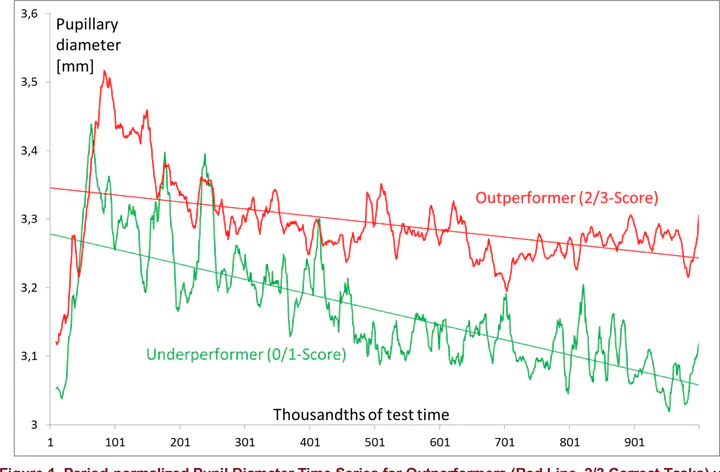Real-time Prediction of User Performance based on Pupillary Assessment via Eye Tracking

Abstract
We propose a method to predict user performance based on eye-tracking. The method uses eye-tracking-based pupillometry to capture pupil diameter data and calculates—based on a Random Forest algorithm—user performance expectations. We conducted a large-scale experimental evaluation (125 participants aged from 21 to 61 years) and found promising results that pave the way for a dynamic real-time adaption of IT to a user’s mental effort and expected user performance. We have already achieved a good classification accuracy of user performance after only 40 seconds (5% of the mean total trial time that our participants took to complete our experiment). The non-invasive contact-free method can be applied cost-efficiently both in research and practical environments.
Keywords: NeuroIS, user performance, mental effort, pupillometry, eye-tracking, Random Forest.